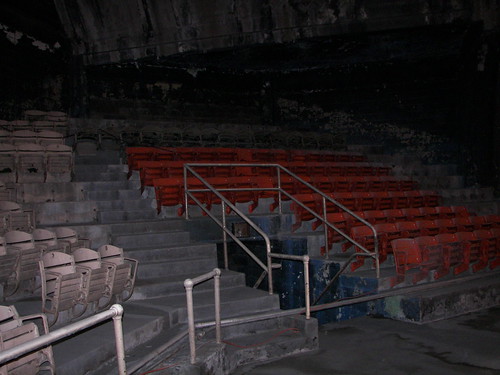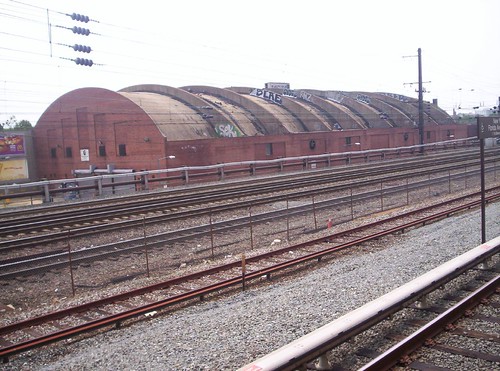The length of time it takes for others to take up an idea: music edition

I joke with people I know that I my ideas are not really all that transformational, but merely 3-5 years ahead of most others. I guess I should give myself more credit, or at least a longer time frame. This comes up in the context of the Uline Arena. According to the Post, in "What’s going on with ... Uline Arena?" :
On Feb. 10, as part of its design fellowship, the Washington office of the architecture firm HKS will convene about a dozen design students from mostly local colleges and universities to determine how best to develop the building into a for-profit music museum. HKS designer Chad Porter and project architect Shantee Jamison said they discussed the idea with Paul Milstein of Douglas Development Corp., which owns the building, and heard that company founder Douglas Jemal had a similar vision.
“We started to talk about it and then [Milstein] sort of stopped us in our tracks and told us this was Doug’s dream, to bring a music museum to the city,” Porter said.
This is a pretty hysterical statement.
1. The people who led the effort to get the Uline Arena landmarked (I was the person who led the effort, with the participation of many others including Alan Kimber, Justine Christenson of the National Park Service, and the DC Preservation) League) made this point all the time. See the 2006 blog entry, "Uline Arena Landmarked."
At that time the Federal City Council kept pushing their National Music Museum proposal but never considered the Uline as an authentic venue for such an establishment. Instead, they did something at the Carnegie Building on Mount Vernon Square which failed miserably and pushed the Historical Society of Washington towards bankruptcy. See the blog entry from 2008, "Why did DC's attempt at a music museum fail?"
2. And the other point I kept making was that a music facility could be developed there in association with the then XM Satellite network, now Sirius, in that they could promote music and the development and promotion of their music and radio programming service. See the blog entry from 2005, "Speaking of creative asset utilization."
3. Later, the people who own 9:30 Club approached Douglas Development in hopes that they would be able to acquire the building, and open a concert facility there, but for the most part, Douglas Development never gave them the time of day.
Labels: arts-culture; concerts-music; cinema, cultural planning





0 Comments:
Post a Comment
<< Home